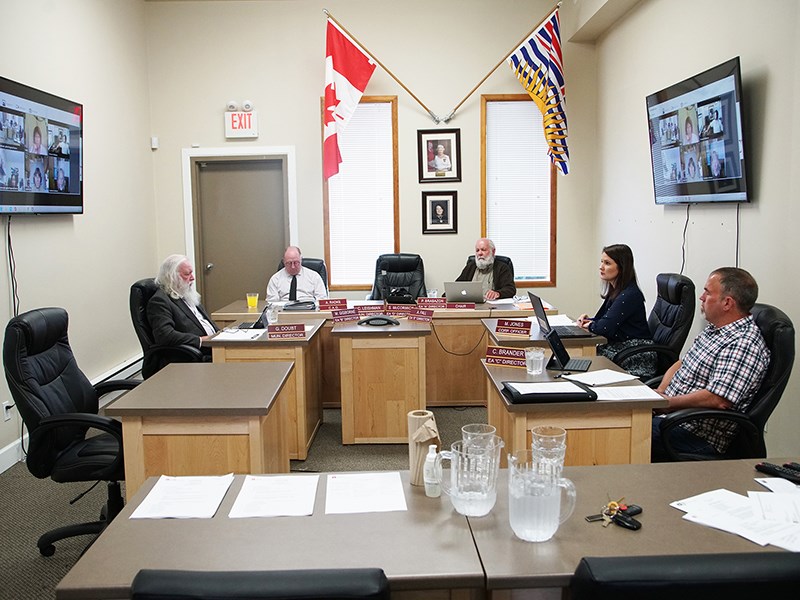qathet Regional District (qRD) will be providing comment regarding Western Forest Product’s (WFP) pest management plan, which involves herbicide use over a large tract of land in a WFP tree farm licence (TFL).
At the May 28 qRD board meeting, directors carried a motion that the board provide comment to the WFP pest management plan application for its TFL situated in the qRD region by directing staff to forward the qRD integrated pest management program policy, and to write correspondence that emphasizes the point in the procedures for pesticide/herbicide use that states “foliar or sprays of herbicide applications are generally discouraged. The preferred methods are stem injection, stem cut, basal bark and hack and squirt treatments, or similar application methods.”
City of Powell River director CaroleAnn Leishman said she received a number of emails regarding this WFP pest management plan (PMP) application. She said having gone into the application and looking at the wording in the plan, WFP says it has excluded all community watersheds in the PMP from pesticide/herbicide use. She said, however, the WFP pest management plan states the pesticide/herbicide treatment includes foliar sprays (backpack sprayers), individual tree injections, brush saw applicators, basal applications, cone sprayers and stump treatment. The manual treatment techniques include girdling, manual brushing and weeding, mechanical brushing and weeding, knockdown and pulling and prescribed burning.
Leishman said the regional district’s integrated pest management program policy clearly states that foliar or sprays of herbicide applications are generally discouraged. She said the wording is not as strong as she would like.
Leishman added that the policy clearly states the preferred methods are stem injection, stem cut, basal bark and hack and squirt treatments, or similar application methods. She said it was discouraging that federal and provincial governments are approving plans that still use the herbicide glyphosate and other “pretty terrible chemicals.”
“The qathet Regional District policy states spraying is not on,” said Leishman. “I want to get that across. I really want to send them the policy indicating we do not want to see any spraying of glyphosate or these other herbicides.”
Councillor George Doubt said this issue has generated more emails to him from members of the public than other items of concern.
“So many people have taken the time to intervene and say they want something done about this application and they want their views heard,” said Doubt. “Their views are to minimize the spraying of herbicides and pesticides. They would like a strongly worded letter from this regional district saying the people in this region feel that way.”
Chair Patrick Brabazon said his only concern was that the regional board would be writing a letter on the fly to meet a deadline. He said Leishman had come up with a motion that he thinks tells WFP what the regional district’s policy is.
“It may not be as strong as people like but I would suggest if we wanted to do something stronger, we should go back to our policy,” said Brabazon. “At that point, we can have a discussion over a letter that could be sent whenever we get a referral like this in the future. I’m just reluctant to write letters on the fly.”
Leishman said the due date for comment was in two days after the board meeting. She said in addition to doing what was suggested in the motion from the board, she would encourage all directors to send their own emails to WFP, copying the minister of the environment, minister of forests, minister of health and local first nations.
Brabazon said from his understanding of the situation, the argument is with the province, not with the licensee (WFP).
“We should take the fight to where it belongs,” said Brabazon.
According to the WFP pest management plan for the period 2020 to 2025, the land area covered by this plan encompasses one tenure: TFL 39, Block 1 (approximately 69,000 hectares of productive forest area). The PMP only applies to those areas managed by Western Forest Products. The plan area is within the administrative jurisdiction of qathet Regional District. The geographic location of the plan area is from the upper Theodosia Valley and Powell Daniels in the north, to south of Lois Lake in the southeast and to Powell River in the southwest.



